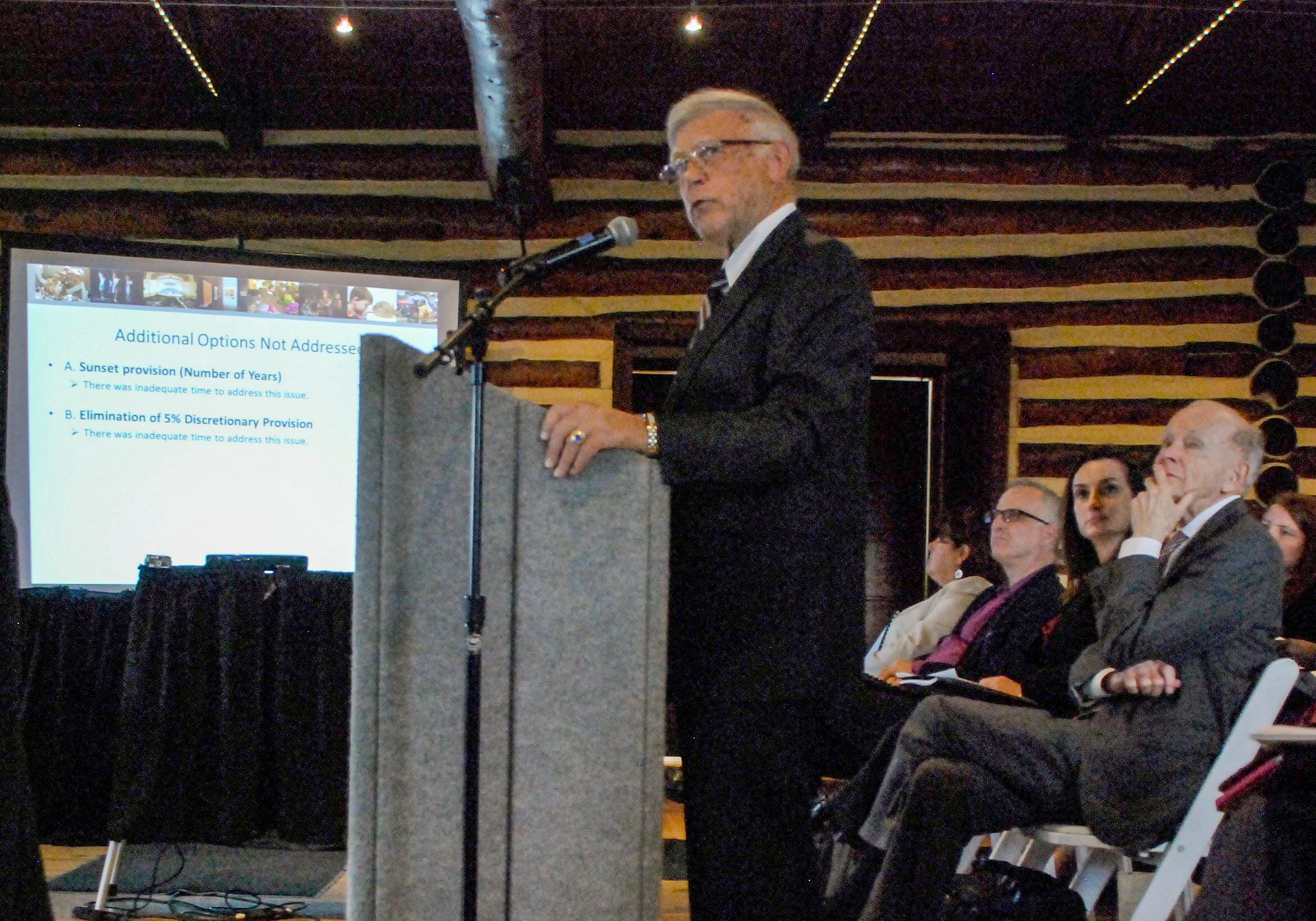
A task force on Thursday recommended 12 statutory changes to the Scientific and Cultural Facilities District as the fund prepares for a reauthorization vote in 2016.
Among the proposed changes: a reformulation of the way revenue from the SCFD tax is distributed among organizations that are part of the district.
Since 1989, SCFD has distributed revenue funds from 0.1 percent of sales and use tax -- totalling more than $800 million -- to hundreds of the metro area’s cultural organizations. Last year, SCFD estimates distributing nearly $50 million to around 280 organizations throughout seven metro-area counties.
The tax is up for reauthorization in 2016. Voters have approved to extend the SCFD tax twice before: in 1994 and again in 2004.
SCFD Director Peg Long says a lot has changed since the first bill passed in 1987, including technology and the region’s population, and new legislation needs to reflect those realities.
“This is a very important phase,” Long says. “We really need to be forward thinking because the decisions that are made at this point in time will probably be the decisions that we’ll be living with for quite awhile.”
In 2011, SCFD started discussions with stakeholders on a wide range of issues. Last year, seven work groups provided input that informed the task force’s considerations in 2015. More than 330 people -- from organization representatives to community members -- participated in the multi-year process.
SCFD board chair Dan Hopkins says the effort is the most extensive and inclusive in the fund’s history.
"The task force has done a lot of heavy lifting here to get us to this point,” Hopkins says. “We feel a heavy burden with this, to be very honest with you. The public good here is our overall goal, and we want to do this right.”
One significant change proposed by the task force concerns the allocation of tax revenue to organizations across SCFD’s three tiers. Five groups in Tier 1 currently share 65.5 percent of the funds, while 27 regional organizations in Tier 2 share 21 percent, and more than 200 smaller organizations in Tier 3 share 13.5 percent.
The task force proposed the following tax levy change to allocate higher percentages to the second and third tiers:
If funds exceed $38 million: Tier 1: 57 percent; Tier 2: 26 percent; Tier 3: 17 percent
If funds fall below $38 million: Tier 1: 64 percent; Tier 2: 22 percent; Tier 3: 14 percent
George Sparks is the president of the Denver Museum of Nature and Science, a Tier 1 organization. He says he doesn’t mind taking the recommended amount from Tier 1 to give to the other two tiers.
"The issue is: What’s the right thing for the citizens?" Sparks -- who also served on the task force -- says. "You have to project who’s going be living here, what are their needs, and begin to incrementally change and move the funds.”
But others say the recommended amount shifted to Tier 3 isn't enough. Louisville resident Susan Honstein, who is part of an advocacy group for Tier 3 organizations called Cast3, points out that Tier 3 groups draw a third of audiences but will only get up to 17 percent of the pot.
“I don’t think that’s equitable," she says. "All of the Tier 1s are in Denver, the majority of the Tier 2s are in Denver. So when you roll that all up, a lot of the money is going to Denver.”
The board of directors will now discuss the recommendations at its next public meetings in May and June before deciding what final changes to make when drafting 2016 legislation this summer. The public can share its comments by emailing [email protected] until the meeting on May 28 at the Denver Art Museum.
Here are five other recommendations made by the 18-member task force. Find the full summary report here and a slideshow presentation here.
1. There should be no expansion in the number of tiers to four.
2. The administrative percentage should be increased from .75 percent to 1.5 percent.
“The 0.75% of revenue allocated to administration has not, in any year, been sufficient to cover actual operating costs, which are very reasonable, especially given the increase in the number of counties, councils, funded organizations and funds to be distributed,” the report says.
3. Organizations seeking SCFD eligibility must meet a minimum operating threshold of $25,000 or have been operating as a 501(c)(3) for a minimum of ten years. Existing organizations will be grandfathered in.
“Organizations with annual revenue below $25,000 generally have difficulty complying with the SCFD’s organizational and financial capacity eligibility requirements. Accountability for public funds may also be an issue,” the report says.
4. Increase the years of existence requirement from five to seven years for Tier 2 and from 3 three to five years for Tier 3
5. Tier 2 organizations should demonstrate regional service, as defined by the SCFD board.
“Board policy could ascribe a minimum percentage of attendance that must be from outside the organization’s home county, or the board could require that collectively the organizations receiving Tier II funds serve the residents of all counties,” the report says.









